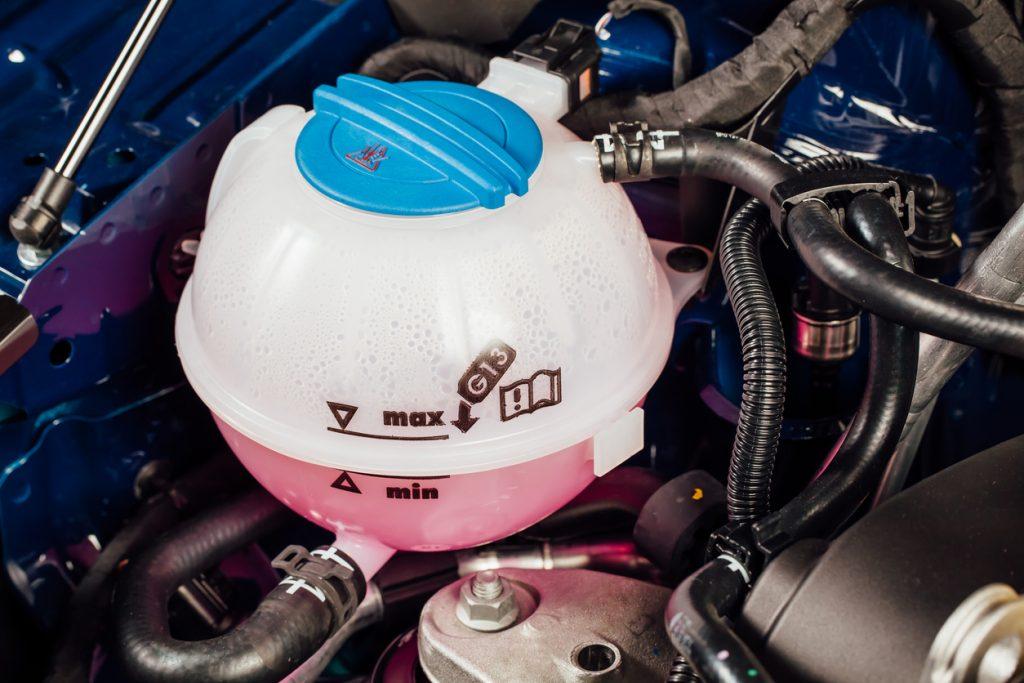
The lifetime change from 3 years and 60.000 kilometers to 5 years and 240.000 kilometers. From now on the organic acids were responsible for corrosion protection.
Auto coolant color free#
The first Organic Acid Technology coolant was designed! Their special character was the silicate free mixture. The chemical basic of EG and PG didn´t change but the silicate (inorganic acid) was replaced by oganic ingrediants like carboxylate. A coolant exchange after 3 years or 60.000 kilometers was necessary. The main issue of the first coolant was the short additives lifetime. The red mud deposit would plug the channels or emery metals and produce more corrosion. Additionally it prevents the appearance of „red mud“. That prohibits an electonic exchange of different precious metals and disable a stonger corrosion. The coolant creates a protection film between the metal material and cooling lubricant. Hows does the protection of an antifreeze work? That technology refer to the use of anorganic silicate acid. From that time both coolants found their difference in the chemical basic of EG and PG.īecause both coolants used silicate, they were declared under the Inoganic Acid Technology (inoganic acid technology].

The first mixture advancement used less toxic EG and more of the expensive chemical polypropylene glycol. During that time the conventional antifreeze was compatible with every vehicle and peformed well in cooling the engine, preventing freezes, secure the heat transfer and protecting the cooling system against corrosion. In there the silicate was a strong additive for corrosion protection. They all based on a constant balance of ethylene glycol (also called Glycol / Glykol), water and additives. That seems to be a little bit weird because the first coolants had the same ingrediants and colour. For example in orange, blue, green, yellow or purple. many coolant manufacturers use different colours.If you look for coolants in several retail stores you have a choice between many coolants in different colours. Newer coolants, based solely on the OAT chemical make-up, now offer a 10-year or 150,000 km change interval thanks to their superior corrosion protection. They could be a blend of IAT and OAT chemicals, and were therefore named ‘Hybrids’. These ‘Extended Life Coolants’ (ELC), were usually orange in colour and offered a five-year or 100,000-km change interval. Next came Organic Acid Technology (OAT) coolants, whose chemical make-up offered better protection for cooling systems, and extended the life of the coolant. With these types of coolants, you’d normally have to change them every two years, or every 60,000 km Older coolants that used Inorganic Additive Technology (IAT) were usually blue or green in colour. In days gone by, the colour of coolant was determined by the type of chemicals used to prevent corrosion - meaning you could tell a lot about the type of coolant used by its colour. However, it’s important to make sure you’re putting the right liquid into your car, so here we give a bit of insight into the differences, and also provide a solution in case you’re confused about which type of coolant/antifreeze to use or worried about what’s in your car. There are historical reasons why it comes in different colours, and different brands use different colours as well, but these days it doesn’t necessarily tell you all that much. The colour of engine coolant isn’t there to make it look pretty. Have you ever wondered how pink, orange, blue and green engine coolants differ from each other? Perhaps you’ve bought a car, checked the coolant/antifreeze reservoir for the first time and noticed it was different from your last car.


 0 kommentar(er)
0 kommentar(er)
